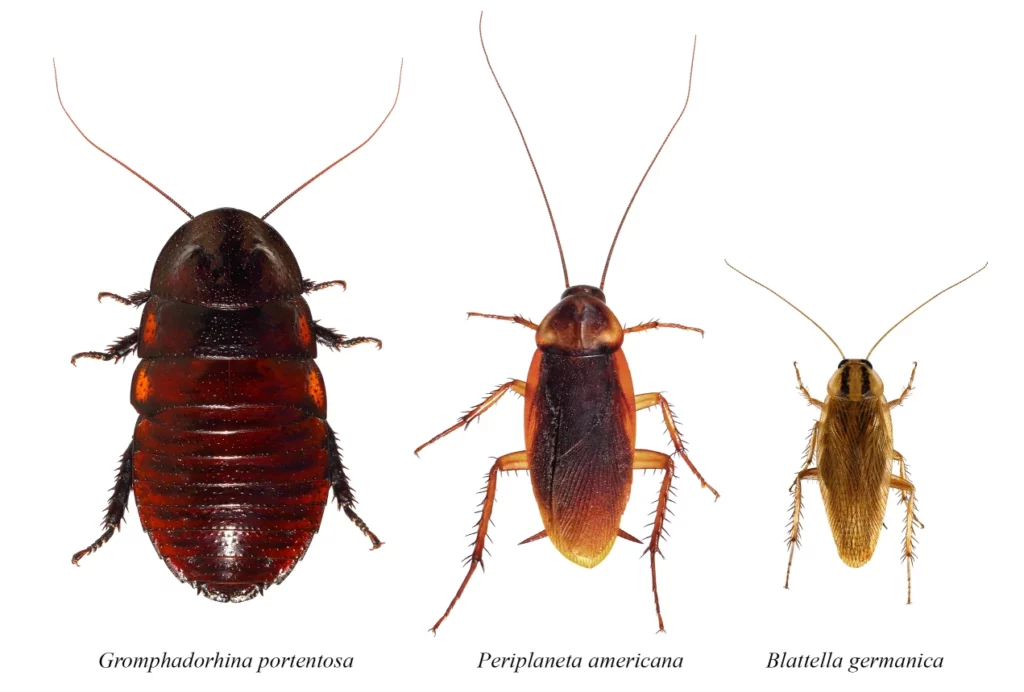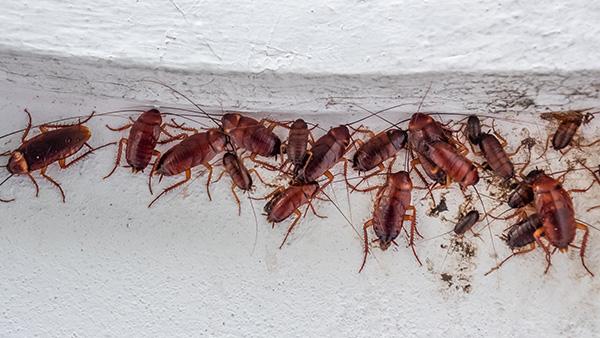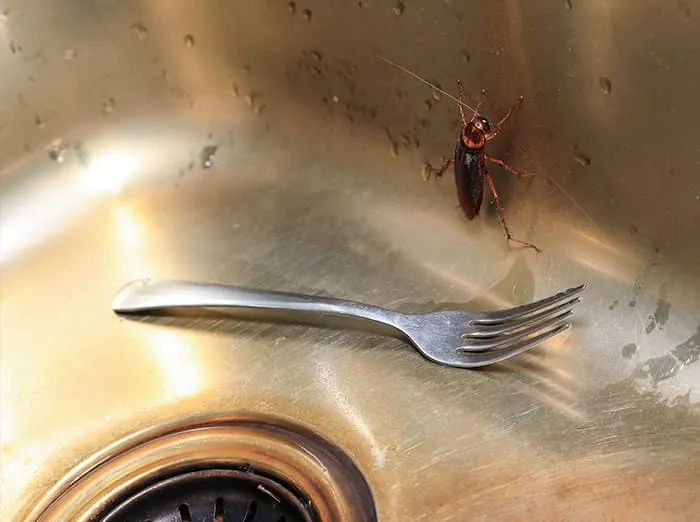Cockroach Treatment in Florida:
Exterminator Services for Apopka, Plymouth, and Zellwood
Florida’s sun-soaked climate may be ideal for year-round outdoor living, but it also presents the perfect conditions for cockroaches to flourish. From warm temperatures to high humidity, Florida offers a comfortable habitat that allows roaches to invade homes, businesses, and other indoor spaces. For residents in Apopka, along with those in Plymouth and Zellwood, encountering a cockroach scuttling across the floor can signal a much larger infestation lurking behind walls or beneath appliances. When it comes to curbing these resilient pests, a thorough plan that involves both immediate eradication and long-term prevention is essential.
This service page explores the intricacies of cockroach treatment in Florida, outlining the challenges posed by the state’s environment, describing effective strategies for removing an infestation, and explaining why enlisting a professional cockroach exterminator can make a substantial difference. By understanding roach behavior, targeting the problem at its source, and making small but meaningful changes to your living or working environment, you can dramatically reduce the risk of future outbreaks.
Florida’s Climate and Cockroach Infestations

- Year-Round Warmth
Cockroaches, like many insects, thrive in temperatures that rarely dip below freezing. Florida’s mild winters mean that roach activity can persist throughout the year. In cooler regions, roach reproduction slows during extended cold spells, but in areas like Apopka—where truly cold weather is minimal—cockroach populations remain active and continue reproducing nearly nonstop. - Abundant Humidity
Whether through regular rainfall or the natural humidity levels close to bodies of water, Florida’s environment often feels damp. Cockroaches require moisture to survive, and they easily find it here—be it from leaky pipes, damp basements, air conditioning condensate, or water pooling in kitchens and bathrooms. When these insects detect a stable water source indoors, they grow bolder, setting up nests where conditions remain consistently comfortable. - Plentiful Food Sources
Cockroaches are opportunistic feeders that can subsist on a variety of materials, from food scraps in garbage cans to pet kibble left out overnight. In homes or businesses without strict cleanliness protocols, roaches discover ample crumbs, grease splatters, or unsealed pantry goods. Even small, unseen spills behind appliances can sustain colonies. With Florida’s climate encouraging them to remain active, any accessible food can quickly draw an entire roach population into your living space. - Minimal Winter Slowdowns
In many northern states, freezing temperatures help kill off weaker roaches or force them into near-dormancy, capping the rate of colony growth. Florida’s relatively mild winters seldom produce the kind of prolonged cold that halts cockroach breeding cycles. Instead, roaches remain in prime condition to scavenge, breed, and spread, demanding more persistent vigilance from property owners. - Expanding Suburban Areas
Cities like Apopka continue to develop, creating more structures where cockroaches can nest. Residential communities, retail spaces, and restaurants all provide cozy nooks for roaches to conceal themselves, especially if these buildings share walls or utility lines. As new housing and commercial complexes appear, roaches have multiple pathways to move between units or floors, complicating control efforts.
Spotting the Signs of a Cockroach Infestation
Detecting a cockroach problem early can limit its reach and spare you the stress of dealing with a major outbreak. Common warning signs include:
- Live Sightings: Spotting a cockroach scurrying across the floor or darting away when you turn on a light is the most obvious sign. If you see multiple roaches during the day, it often means the infestation is already extensive, as roaches prefer darkness and typically hide during daylight hours.
- Droppings: Different cockroach species leave behind small, dark, cylindrical droppings. They might appear in cupboards, drawers, or behind large appliances. Finding these often indicates that roaches have staked out a consistent feeding or nesting spot.
- Musty Odor: Larger roach populations sometimes produce an unpleasant, musty smell. If you notice a strange, lingering odor—especially in enclosed areas like pantries or closets—investigating for roaches is wise.
- Egg Casings: Cockroaches lay eggs in protective capsules called oothecae, which can contain multiple eggs each. Seeing these small, brownish casings near corners, under furniture, or along baseboards signals active breeding in your environment.
- Damage to Paper or Fabric: Certain cockroaches nibble on book bindings, cardboard, or even textiles when searching for materials to consume. Unexplained damage to stored clothing, paper files, or newspapers can be another red flag.
If you notice one or more of these indicators, contacting a cockroach exterminator for an assessment is a prudent next step. Swift action helps ensure roaches do not spread to more rooms or infiltrate neighboring units.

Types of Cockroaches in Florida
- American Cockroaches
Also known as “palmetto bugs,” American cockroaches are among the largest roaches in Florida, typically measuring up to two inches in length. They’re reddish-brown and can fly short distances. They favor warm, humid spots like sewers, basements, and crawl spaces. Once inside, they often gather in kitchens or bathrooms where moisture is plentiful. - German Cockroaches
Smaller than American roaches, German cockroaches measure about half an inch to three-quarters of an inch. They typically have two dark stripes behind the head. Despite their size, they breed rapidly, making them one of the most challenging species to contain. German roaches are frequently found in kitchens, especially in drawers, near dishwashers, or beneath sinks. - Oriental Cockroaches
These roaches have dark, almost black bodies and thrive in cooler, damp areas—like drains, crawl spaces, or gardens. Their preference for moist conditions also draws them indoors if they locate a steady water supply, such as in bathrooms or laundry rooms. - Smokybrown Cockroaches
Smokybrown roaches have a uniformly dark brownish-black color, often living in tree holes or roof eaves. They may enter homes through attic spaces, especially if vents or soffits are not well-sealed. They rely heavily on moisture, so ensuring dryness around roofs and gutters can discourage them. - Brown-Banded Cockroaches
These smaller roaches have light-colored bands across their wings. Unlike German roaches, which concentrate around kitchens and bathrooms, brown-banded roaches can infest living rooms, bedrooms, and other drier areas. They may hide inside furniture, clocks, or electronics.
Our Approach to Cockroach Treatment
- Inspection and Identification
An effective cockroach exterminator starts by determining which roach species has infested your property. This step helps in selecting the right baits, products, and strategies. The technician checks hidden corners, underneath appliances, and inside closets or pantries for droppings, egg casings, or live insects. - Targeted Extermination
Professionals often use a combination of techniques designed to eradicate current populations and hinder future outbreaks:- Baits: Slow-acting baits placed in strategic locations let roaches feed and carry the poison back to their nests, gradually affecting the entire colony.
- Dusts and Sprays: Applied in cracks, crevices, or behind large appliances, these products remain in roach-travel paths, ensuring insects pick them up and perish.
- Growth Regulators: Some formulations disrupt roach reproduction, ensuring new nymphs do not reach adulthood.
- Sanitation and Exclusion
A thorough cockroach treatment program goes beyond killing visible insects. Property owners receive guidance on improving sanitation—like promptly cleaning spills, storing food in sealed containers, and removing clutter that can act as roach harborages. Additionally, sealing off entry points with caulk or weatherstripping ensures roaches from outside can’t re-enter easily. - Follow-Up Visits
Since cockroaches can be resilient, a follow-up appointment is often recommended. The technician inspects areas where roach activity was highest, looks for new droppings, and re-treats if necessary. Periodic reviews help confirm that the infestation has truly subsided and that newly hatched roaches do not go unnoticed. - Long-Term Prevention Tips
Once roaches are under control, adopting a few routine measures can keep them at bay:- Regularly vacuum beneath furniture and appliances to remove food debris.
- Repair leaky faucets or pipes to minimize free-standing water.
- Keep trash sealed and dispose of it regularly.
- Inspect secondhand items like furniture or boxes for signs of roaches before bringing them indoors.

Service Areas: Apopka, Plymouth, and Zellwood
This cockroach exterminator service is available for residents and businesses in Apopka, as well as the surrounding communities of Plymouth and Zellwood. Whether you own a home, manage a retail store, or oversee a multi-unit property, dealing with roaches swiftly is crucial for preserving hygiene and public safety. Prompt, professional attention reduces the risk of further spread—both to adjacent units and to personal belongings that might otherwise become roach transport carriers.
In Apopka’s subtropical climate, no building is truly immune from roach incursions, especially if there are open doors, unsealed windows, or communal trash areas. Maintaining cleanliness, performing routine checks, and engaging an exterminator for serious outbreaks helps keep roach encounters to a minimum. This practice safeguards not just individual properties but entire neighborhoods, ensuring a higher standard of living in these close-knit Florida communities.
Why Choose Our Cockroach Exterminator Service
- Experience in Florida’s Environment
Having a cockroach treatment plan tailored to Florida’s conditions is indispensable. The year-round warmth and humidity require solutions that remain effective over time. Specialists who understand how roaches behave in this climate can pinpoint breeding zones, anticipate population surges, and methodically break the roach life cycle. - Customized Strategies
A cookie-cutter approach seldom works. Properties vary in layout, occupant habits, and structural vulnerabilities. A thorough inspection identifies which roach species is present, where they hide, and how best to eradicate them. Personalized strategies might blend multiple control tools—baits, sprays, dusts, or even structural modifications like caulking. - Focus on Safety and Discretion
While dealing with roaches is urgent, respecting the home or business environment matters. Professional exterminators use targeted applications that limit exposure to non-target organisms. If neighbors or customers see a roach problem, it can raise concerns about sanitation, so quick and discreet resolution maintains a positive image. - Prevention and Education
The top cockroach exterminator services go beyond applying treatments. They explain what led to the infestation—whether it was drips under the sink, leftover pet food at night, or unchecked cracks near door frames. By addressing these root issues, you reduce the risk of seeing roaches again a few weeks or months down the line. - Commitment to Thoroughness
Cockroaches, especially the hardy German or American varieties, resist partial solutions. Skipping a key nesting zone or forgetting to re-check a damp crawl space can let survivors repopulate. A professional approach systematically reviews all potential harborage sites, ensuring no segment of the colony escapes notice.
If you suspect or have confirmed a roach problem in Apopka, Plymouth, or Zellwood, swift action is your best defense. Cockroaches reproduce rapidly, and ignoring the early signs could lead to a widespread infestation that is significantly tougher (and more time-consuming) to address. Contact us to learn more or schedule your service. A structured approach to cockroach treatment tackles active nests, helps close off entry points, and teaches you how to reduce conditions that attract roaches in the first place.
By investing in a thorough plan—one that includes targeted extermination, practical exclusion techniques, and ongoing vigilance—you can free your home or workplace from the stress and hygiene risks posed by a roach infestation. Florida’s climate may favor the survival and breeding of these insects, but that does not mean you have to endure them indefinitely. With the right combination of expertise, consistent follow-up, and attention to the details of your environment, cockroaches can be significantly limited or entirely removed, letting you enjoy your property without the unwelcome sight of scuttling pests.
Cockroaches have long been a challenge for Floridians, yet modern cockroach exterminator methods deliver results that keep these insects at bay. Recognizing the signs, seeking professional help early, and making small but impactful changes—such as sealing cracks and storing food securely—work together to ensure roaches do not find your space inviting. Whether you are dealing with large palmetto bugs (American cockroaches) or the resilient German variety, prompt and consistent measures lead to a healthier, more pleasant living or working atmosphere for everyone. By tackling cockroach problems thoroughly in Apopka, Plymouth, and Zellwood, you safeguard your environment and preserve peace of mind in Florida’s otherwise vibrant and welcoming setting.
